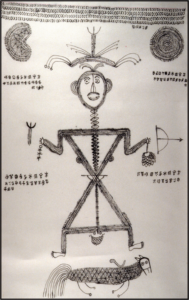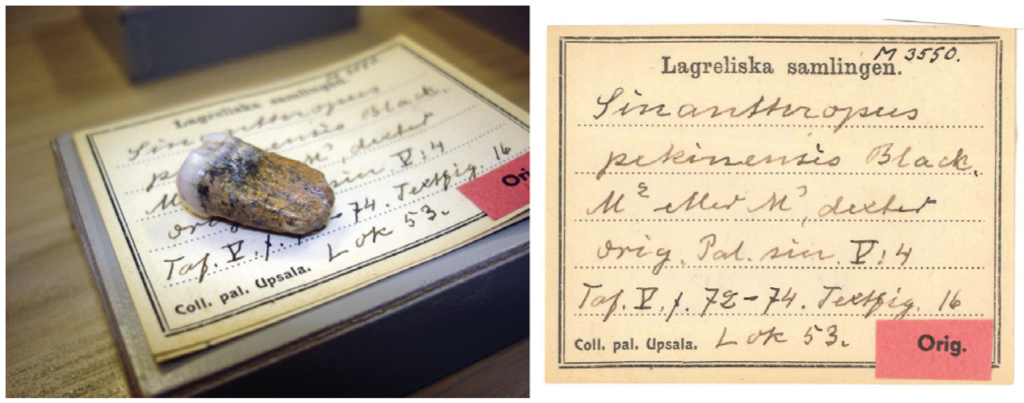This Special Issue of the Journal of World History invites article manuscripts that address any aspect related to the global, transnational, and cross-cultural histories of automobilization, automobilism, anti-automobilism, de-pedestrianization, and re-pedestrianization. Continue reading “Call for Papers: Global Automobilization, Journal of World History”
News and Events
Words from the Fire: Poems by Jidi Majia (MĀNOA 30:1)
[et_pb_section bb_built=”1″][et_pb_row][et_pb_column type=”3_4″][et_pb_text _builder_version=”3.17.2″]

The new issue of MĀNOA: A Pacific Journal of International Writing, volume 30 number 1, is a collection of poems by Jidi Majia, translated by Jami Proctor Xu.
Jidi Majia is a member of the Yi ethnic minority group, one of the fifty-five officially recognized minorities in China and the sixth largest, comprising about nine million people. The subgroup to which Jidi Majia belongs, Nuosu, is the largest. For centuries Nuosu people have held on to their language, culture, and social structure, staving off assimilation by the majority Han.
This collection of more than 125 of Jidi Majia’s poems opens with an editor’s note and concludes with a translation of Jidi Majia’s speech for the 2017 Xu Zhimo Poetry and Art Festival at Cambridge University. More than a dozen images featuring Nuosu scrolls and paintings accompany the poems. Continue reading “Words from the Fire: Poems by Jidi Majia (MĀNOA 30:1)”
Early Release Articles: Korean Studies (October 2018)
University of Hawaiʻi Press is proud to present the early release of the following articles and book reviews from Korean Studies through a partnership with Project MUSE.
EARLY RELEASE ARTICLES
Review of Ross King’s Seoul: Memory, Reinvention, and the Korean Wave. University of Hawaiʻi Press, 2018.
by Keith Howard
Review of The Korean Wave: Evolution, Fandom, and Transnationality, edited by Tae-Jin Yoon and Dal Long Jin. Lexington Books, 2017.
by Roald Maliangkay
Review of Dafna Zur’s Figuring Korean Futures: Children’s Literature in Modern Korea. Stanford University Press, 2017
by Sonya F. Zabala
Review of Kōji Takazawa’s Destiny: The Secret Operations of the Yodogō Exiles. University of Hawaiʻi Press, 2017.
by John Cussen
The Punishments of the 1728 Musin Rebellion Leaders (article)
by Andrew David Jackson
Muhammad Kkansu and the Diasporic Other in the Two Koreas (article)
by Theodore Jun Yoo
Browse all Korean Studies early release articles online here.
Please note: Early release manuscripts have been through our rigorous peer-review process, accepted for publication, and copyedited. These articles will be published in a forthcoming issue of the journal. These articles have not yet been through the full production process and therefore may contain errors. These articles will be removed from the early release page once they are published as part of an issue.
Stay tuned for more early release articles from UH Press journals.
Pacific Science Vol. 72 No. 4 (October 2018)
[et_pb_section bb_built=”1″][et_pb_row][et_pb_column type=”3_4″][et_pb_image _builder_version=”3.15″ src=”https://www.uhpress.hawaii.edu/wp-content/uploads/2018/10/07_Fig-2_RGB.jpg” /][et_pb_text _builder_version=”3.15″]
From the article “New Distribution Records of Cetaceans from the Federated States of Micronesia,” by Donald W. Buden and Allain Bourgoin. Cetaceans recorded on Pohnpei for the first time: Kogia sp., A, whole body, ventral view; B, undersurface of head showing teeth and jaws. Globicephala macrorhynchus, C, whole body; D, oblique view of head showing teeth and jaws.
[/et_pb_text][et_pb_text _builder_version=”3.15″]
The fourth issue in volume 72 of Pacific Science, the official journal of the Pacific Science Association, features the article “Nocturnal Visual Census of Pelagic Fauna Using Scuba near Kona, Hawaiʻi”, eight more research articles, plus an index to all of volume 72. Continue reading “Pacific Science Vol. 72 No. 4 (October 2018)”
Asian Perspectives, vol. 57, no. 2 (2018)
[et_pb_section bb_built=”1″][et_pb_row][et_pb_column type=”3_4″][et_pb_text _builder_version=”3.15″]

This issue of Asian Perspectives features the following scholarly articles:
Late Middle Palaeolithic Subsistence in the Central Plain of China: A Zooarchaeological View from the Laonainaimiao Site, Henan Province
Qu Tongli, Chen Youcheng, Ofer Bar-Yosef, and Wang Youping
New Data from an Open Neolithic Site in Eastern Indonesia
Peter Lape, Emily Peterson, Daud Tanudirjo, Chung-Ching Shiung, Gyoung-Ah Lee, Judith Field, and Adelle Coster
Preliminary Results of the South Vanuatu Archaeological Survey: Cultural Landscapes, Excavation, and Radiocarbon Dating
James L. Flexner, Stuart Bedford, Frédérique Valentin, Richard Shing, Takaronga Kuautonga, and Wanda Zinger
The Dates of the Discovery of the First Peking Man Fossil Teeth
Qian Wang, Li Sun, and Jan Ove R. Ebbestad
The Guandimiao Bone Assemblage (and What it Says about the Shang Economy)
Hou Yanfeng, Roderick Campbell, Li Zhipeng, Zhang Yan, Li Suting, and He Yuling
Continue reading “Asian Perspectives, vol. 57, no. 2 (2018)”
China Review International vol. 23 no. 3 (2016)
[et_pb_section bb_built=”1″ _builder_version=”3.0.47″][et_pb_row _builder_version=”3.0.48″ background_size=”initial” background_position=”top_left” background_repeat=”repeat”][et_pb_column type=”3_4″][et_pb_text _builder_version=”3.15″]
Volume 23 Number 3 of China Review International begins with three featured reviews and 27 more reviews of scholarly literature in Chinese studies.
FEATURES
Steven Sangren, Filiality, and the Holy Grail of Chinese Anthropology (reviewing P. Steven Sangren, Filial Obsessions: Chinese Patriliny and Its Discontents) Reviewed by Christopher Lupke
Confucianism With German Characteristics (reviewing Ming-huei Lee, Confucianism: Its Roots and Global Signicance) Reviewed by Stephen C. Angle
The Chinese Maritime Customs Service: A Chinese, Western, or Global Agency? (reviewing Felix Boecking, No Great Wall: Trade, Taris, and Nationalism in Republican China, 1927–1945) Reviewed by Chihyun Chang
Continue reading “China Review International vol. 23 no. 3 (2016)”
Asian Theatre Journal, vol. 35, no. 2 (2018)

The Fall 2018 issue of the Asian Theatre Journal opens with a note from new editor Siyuan Liu:
This is the thirty-fifth year of ATJ’s publication. As Confucius said, “at thirty I stood firm; at forty I had no more doubts.” That seems to describe ATJ aptly: we’re now firmly established as the journal on Asian theatre but we are still growing, not yet at the stage having no more doubts or questions. In a way, this issue serves as a reminder of our wide scope, both in terms of the contributors’ geographic locations, with half of them based in Asia, and their topics, from traditional theatre to spoken drama, from translation of a wartime Japanese student play to discussion of the world’s largest collection of Indonesian puppets, from dance as gendered nationalism in Tajikistan to the institutionalization of Chinese ethnic dance in Singapore. Continue reading “Asian Theatre Journal, vol. 35, no. 2 (2018)”
Journal of Korean Religions vol. 9, no. 1 (April 2018)
[et_pb_section bb_built=”1″][et_pb_row][et_pb_column type=”3_4″][et_pb_text _builder_version=”3.14″]
Journal of Korean Religions vol. 9, no. 1, a special issue on Religions in Cold War Korea and Peacemaking, guest edited by Heonik Kwon and Seong Nae Kim (view their Introduction here), features the following articles:
Campus Crusade ‘‘Explosions’’: Conversions and Conservatism from the US Bible Belt to Cold War South Korea, 1972–1974
by Helen Jin Kim
American Power in Korean Shamanism
by Heonik Kwon and Jun Hwan Park
Trans-Border Rituals for the Dead: Experiential Knowledge of Paternal Relatives after the Jeju 4.3 Incident
by Sungman Koh
Towards a Universal Model of Reconciliation: The Case of the Jeju 4.3 Incident
by Myung-Lim Park
A Christian Pacifist: An Chunggŭn’s Christian Ethics and Armed Struggle
by Jieun Han
Research Article:
Islamophobia and the Politics of Representation of Islam in Korea
by Gi Yeon Koo
…plus Reviews.
Continue reading “Journal of Korean Religions vol. 9, no. 1 (April 2018)”
Yearbook of the Association of Pacific Coast Geographers, vol. 80 (2018)
[et_pb_section bb_built=”1″][et_pb_row][et_pb_column type=”3_4″][et_pb_text _builder_version=”3.14″]
The 2018 Yearbook of the Association of Pacific Coast Geographers presents a wide range of geographic studies:
The Village Homes Subdivision in Davis: Origins and Evolution of “A Better Place to Live”
By Dennis J. Dingemans
Three Stories about a Statue
By Ronald Davidson
Rock Coating and Weathering-Rind Development at the Edge of Retreating Glaciers: An Initial Study
Ronald I. Dorn and Ara Jeong
Tecolutla: Mexico’s Gulf Coast Acapulco?
Klaus J. Meyer-Arendt
Environmental Knowledge, American Indians, and John Muir’s Trap
Michael W. Pesses
Supplemental Instruction as a Resource for Graduate Student Pedagogical Development
Kalli F. Doubleday and Stacie A. Townsend
Plus meeting reports, awards, and abstracts. Continue reading “Yearbook of the Association of Pacific Coast Geographers, vol. 80 (2018)”
The Contemporary Pacific, vol. 30 no. 2 (2018): Repossessing Paradise
[et_pb_section bb_built=”1″][et_pb_row][et_pb_column type=”3_4″][et_pb_text _builder_version=”3.14″]
“Repossessing Paradise,” the new special issue from The Contemporary Pacific, opens with an introduction from guest editors Kalissa Alexeyeff and Siobhan McDonnell, “Whose Paradise? Encounter, Exchange, and Exploitation.” They write:
This collection arose from thinking about how Pacific Islanders utilize the trope of paradise to describe their lives and the places they call home. Like the many studies that precede this, our work demonstrates how paradise has come to define the Pacific through certain kinds of generic, infinitely reoccurring, and highly substitutable images: beautiful beaches, verdant foliage, and exotic peoples and customs. We show how these images enable possession (from early exploration, through colonial settlement, and including contemporary tourism) and how this is twinned with the dispossession of land, Indigenous peoples, and their epistemologies. What distinguishes this collection from most previous literature is that we combine analyses of contemporary possession with repossession in our exploration of the ways in which Indigenous people reimagine or repurpose paradise for their own needs and desires. Continue reading “The Contemporary Pacific, vol. 30 no. 2 (2018): Repossessing Paradise”
Biography vol. 41, no. 2 (Spring 2018)
[et_pb_section bb_built=”1″][et_pb_row][et_pb_column type=”3_4″][et_pb_text _builder_version=”3.14″]
Biography: An Interdisciplinary Quarterly volume 41, number 2 (Spring 2018) focuses on the concept of interviewing as a creative practice. In their introduction, “Putting Things Together: Introduction to Interviewing as Creative Practice,” guest editors Anneleen Masschelein and Rebecca Roach write:
[W]e consider the interview as an encounter, as an assemblage of heterogeneous elements. It promises access to an interior but ultimately remains unruly: resisting interpretative truth, it reveals things other than what it may promise. Thus, in this special issue as it now stands, our interest has shifted from questions of genre to the notion of the interview as an “unconcept”: ambiguous, paradoxical, the interview belongs everywhere and nowhere.
Journal of World History, vol. 29, no. 1 (June 2018)
[et_pb_section bb_built=”1″][et_pb_row][et_pb_column type=”3_4″][et_pb_text _builder_version=”3.11″]
This issue of the Journal of World History contains the following scholarly articles:
“A Great Want of Loyalty to Themselves”: The Franco-Newfoundland Trade, Informal Empire, and Settler Colonialism in the Nineteenth Century
by Kurt Korneski
The Foral in the History of the Comunidades of Goa
by Rochelle Pinto
Imperial Connections and Colonial Improvement: Scotland, Ceylon, and the China Coast, 1837–1841
by Stan Neal
Continue reading “Journal of World History, vol. 29, no. 1 (June 2018)”




